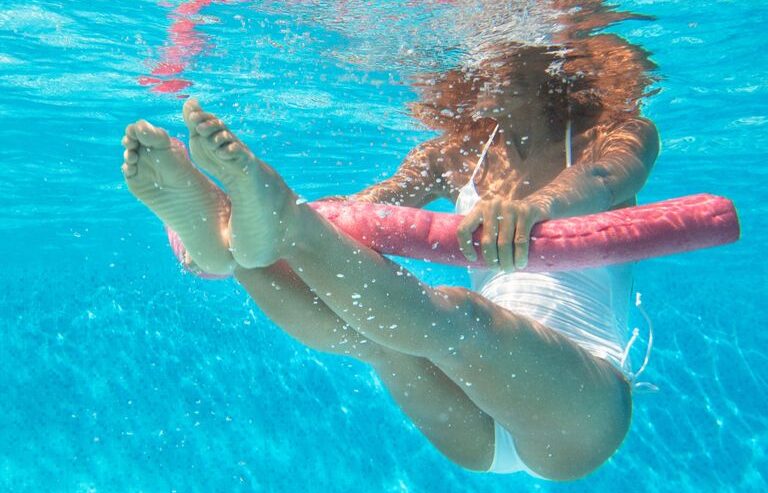If you are given the opportunity to try this summer activity, don’t refuse it.
Water aerobics or aqua aerobics are often associated with hotel animation programs in the heart of the tourist season. Or a bunch of older tourists in the pool trying to follow the movements presented to them by the animator. This type of exercise does not seem overly demanding and is often not on the list of favorite activities for regular recreational exercisers. However, real water aerobics looks much different (and more demanding than those “tourist” programs) and has numerous health benefits.
Water aerobics is performed in an upright position in the water. It does not involve swimming, The exercisers are immersed in water up to the waist or higher. It’s classified into the category of resistance training. To date, numerous forms of water training have developed, from water yoga, through Zumba in water, to various variations of classical water aerobics.
Read the benefits of this type of training:
Relief for joints
- One of the main characteristics of exercising in water is that the load on the joints is reduced to a minimum. By exercising in this medium, we can perform most of the exercises as with classical aerobics, but in the water, we feel lighter and there are almost no movements that put us at risk of injury. Also, because of this, we have the impression that exercising in the water is less strenuous, but in fact, we activate a lot of muscles to maintain a particular position at all.
Ideal for people with health problems
- People who are recovering from an injury, who have problems with their joints or spine, and the elderly – all of them make up the population, which experts will most often advise to be especially careful when choosing the type of exercise and when exercising. For them, water aerobics is one of the better choices. Due to the above minimum load for the joints, exercising in water achieves the strengthening of muscle structures without the risk of injury.
The structure is the same as with “classic” aerobics
- Water aerobics includes all the elements of training: warming up, the main part, and stretching/relaxation, which puts it in an equal position with all other group forms of exercise. All the elements are almost identical to those in classical aerobics, except, of course, that it is not possible to perform exercises on the floor. The main part of the training can be based on aerobic exercises such as various jumps, steps, and the like, but also on isolation exercises for individual muscle groups. The possibilities are numerous and training cannot be boring and monotonous.
Definition of muscle
- Water provides ideal muscle resistance, the kind we can hardly get with classic exercise. The specific stimuli that are created by exercising in water force the muscles to a slightly different activation that creates that beautiful muscle tone that most of us often desire. At the same time, most muscle groups are activated, with a special emphasis on the core and arm muscles, with which we mainly maintain balance. Also, it is worth emphasizing the effect that this type of exercise has on the removal of cellulite – specific movements in the water stimulate circulation and create a massage effect.
The best choice during high temperatures
- Exercising at high temperatures can be very risky for certain groups of exercisers and one should be really careful when and what activity to engage in. Water aerobics is an excellent choice because we are constantly immersed in water at least to the waist and we are automatically less hot, and we can dive at any time and cool down.

If you are given the opportunity to try this summer activity, be sure not to refuse it. Dive into the water, do your best, and get the best out of your workout in the water!
Thanks for reading!
